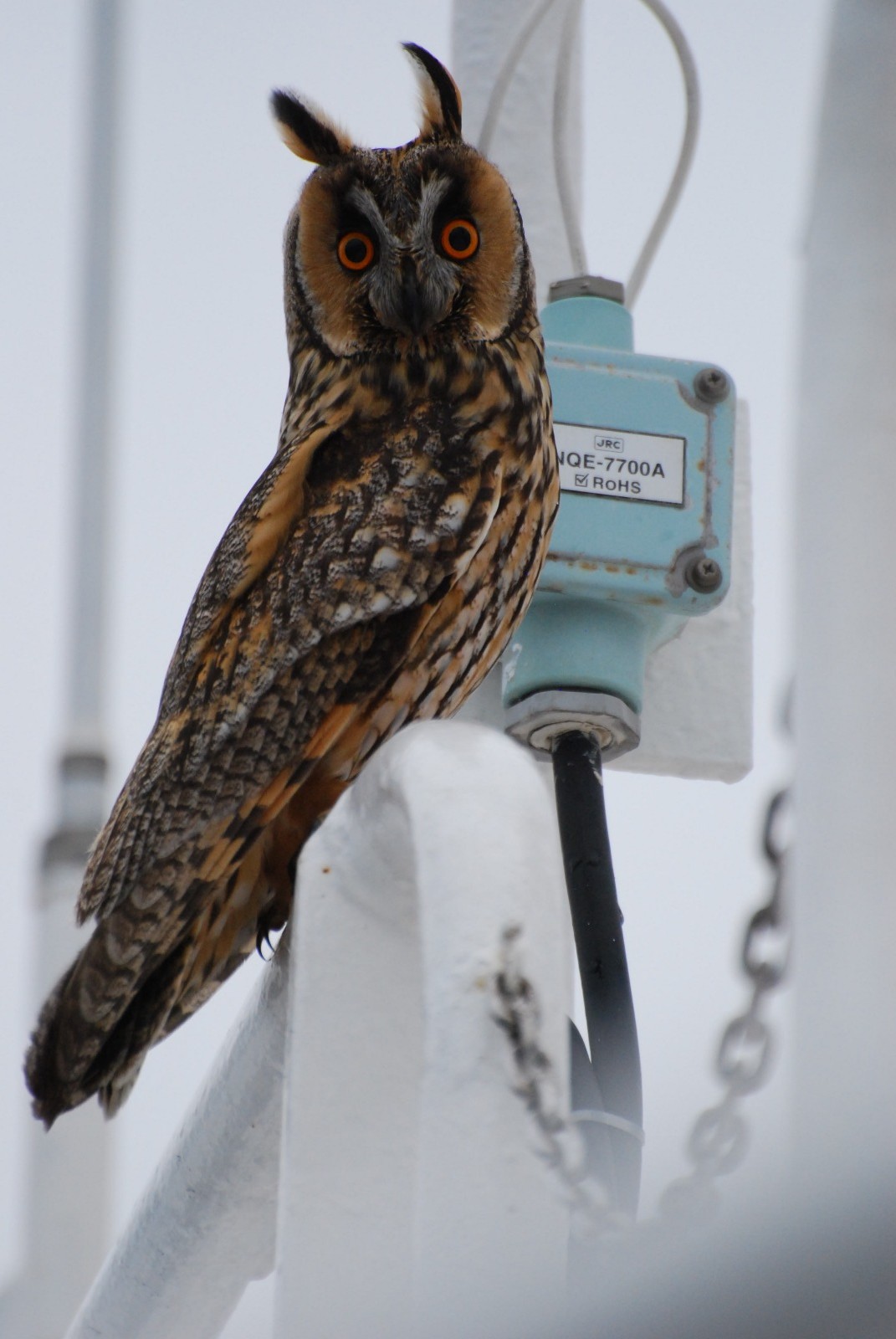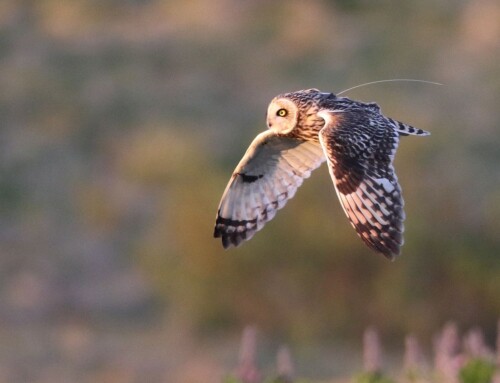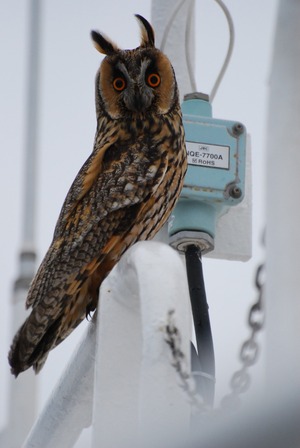 LINKED PAPER
LINKED PAPER
Welcome aboard: are birds migrating across the Mediterranean Sea using ships as stopovers during adverse weather conditions? Sarà, M., Firmamento, R., Cangemi, G., Pagano, L., Genovese, M., Romeo, T. & Silvio Greco, S. 2022 Ibis. doi: 10.1111/ibi.13103 VIEW
About five billion land birds of nearly 200 nesting species in Eurasia make round trips of thousands of kilometres to Africa each year. Their remarkable flight performance (e.g., distance, height, speed) and the mystery of orientation and navigation make the study of bird migration one of the most extraordinary and fascinating fields of research in animal ecology.
I am on my way to the port of embarkation to lead a team of biologists for a field mission in the Mediterranean Sea, between Sardinia, Sicily and Tunisia. I’m excited about the one-month mission on a research vessel. After a year of stoppage due to Covid, I’m finally back in the field, at sea in this case! We have the task of evaluating the presence and transit of birds, turtles, cetaceans, large pelagic fishes in a large area of the Mediterranean and also collecting data on marine traffic and marine litter. At the same time, a group of ornithologists are carrying out a study on migration to the Egadi islands. The idea is to have coordinated data from the two areas to get more information on the post-reproductive migration corridor between Sicily and Tunisia.
We left three days ago and also received the baptism of the sea, 48 hours of storms with sea force 6-7 that felt like being on a roller coaster. We took advantage of this to run in the protocols and detection equipment. It is impossible to spot cetaceans, while the Scopoli’s Shearwaters (Calonectris diomedea) continue to caracole around the ship which painstakingly heads towards the study area. We begin to see the first migratory birds, a couple of Common Swifts (Apus apus), a flock of Grey Herons (Ardea cinerea) and some ducks too distant to be identified. On 20 August we aim to arrive in the study area, fully operational and we spot the first flock of 40 Black Kites (Milvus migrans). However I am disappointed, from the Egadi islands there are news of hundreds of Black Kites, European Honey Buzzards (Pernis apivorus), and other soaring species in transit! But in this area of sea little or nothing passes. On the other hand, many small birds are sighted, such as wagtails and warblers, which often follow the ship. The first bird I record on board is an Eastern Subalpine Warbler (Curruca cantillans), four hours of rest.
I automatically register the data and I don’t pay much attention to it. But I go back to almost 40 years earlier, when a young biologist, I was embarked on trawlers to evaluate the fishing by-catch, and every morning I enjoyed searching in the most hidden corners of the fishing boat to look for pipits, swallows and others that had stopped. When I found a Goldcrest (Regulus regulus) I was shocked at the thought of this tiny little thing crossing the sea! Perhaps that was when I decided to become an ornithologist.
Then a Western Yellow Wagtail (Motacilla flava) arrives on board, and then a group of Northern Wheatear (Oenanthe oenanthe), soon I understand that there is something worth looking at more carefully. Many wagtails pass by the ship or cross the bow, you hear them before you see because they announce themselves with a fine ‘psit-psit’. Some get in the wake and stop on board, even for a couple of minutes and then fly away, while the others continue their undulating flight, inexorable towards their destination. They make me think of cyclists who open the line and set the pace, and when tired give way to a companion and pass in the queue of the group.
By September 4th we have been at sea for 19 days and the birds continue to arrive on board. A European Turtle Dove (Streptopelia turtur) lands on the stern, trying to resume flight all day, but evidently it is not capable. After a few hours, a second dove settles next to it, just one minute and then a third for eight minutes. The first tries to leave with them but inevitably comes back on board. It stayed for almost 10 hours and by the next day was gone. Fallen into the sea, left after the long stop, who knows?

Figure 1 A European Turtle Dove (Streptopelia turtur) aboard ship for almost 10 hours before disappearing.
It is quite evident that the ship is a resting place for birds that are tired or in poor condition; who find unexpected help during their journey and that this is not an occasional occurrence. This is confirmed by the crew who have sailed around the world showing us photos and videos of the birds on board on their mobile phones.
Birds pay significant costs during migration, which are not incurred during stationary periods nor experienced by resident species. The migratory journey includes long flights without food and water, during which the risks of energy deprivation and dehydration are always present, together with the risks of predation and loss en route due to headwinds and storms, and all these risks increase dramatically when crossing barriers, such as the Mediterranean Sea. Risks associated with migration thus have effects on population size and dynamics, and lead to different migration strategies.
Migratory stopover, i.e., the interruption of migratory endurance flight to minimise immediate and/or delayed fitness costs (Schmaljohann et al. 2022), is the prime example of the flexible behaviour used by birds either to adapt to the changing conditions encountered en route and when crossing barriers. Birds use stopovers to refuel reserves (Fusani et al. 2009), for physiological recovery (Fuchs et al. 2006), to wait for the passage of inclement weather (Smith & McWilliams 2014), or for the arrival of optimal flight conditions (Mallon et al. 2021).
At the end of campaign, we observed on average 2.8 birds, of at least 13 species, stopping on board. The median stopping time was 42 minutes, ranging from a few minutes to overnight stays on board. The probability of finding a bird aboard increased with wind force and cloud cover. Birds also stopped more often in a headwind, and less often when the wind came from other directions.
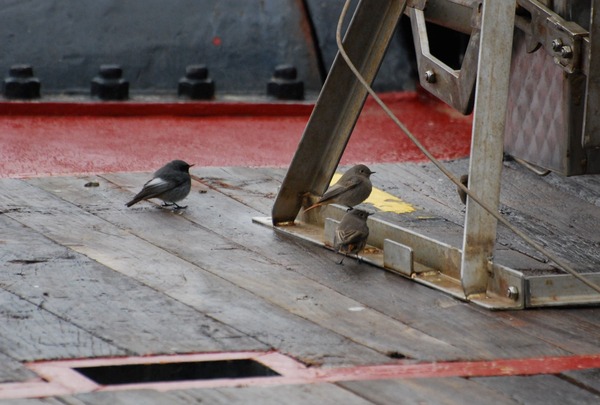
Figure 2 The lack of ornithologists on board prevented the orderly collection of bird data during the other oceanographic legs. Migrating birds on board were however photographed until the end of October, like this flock of Black Redstarts (Phoenicurus ochruros). This increased the list of species and individuals and extended the period to at least 3 months © Francesco Stenico.
Back on land, bibliographic research confirms my feeling of having recorded something that has so far escaped the study of migration. But above all it confirms to me that the Mediterranean is crossed by thousands of ships every day. Multiplying the daily average number of birds that stopped on our ship by the daily average of the ships passing through the area, for 90 days from August to October, I get an estimate of almost 4 million birds that could potentially use the ships as a stopover in this stretch of sea.
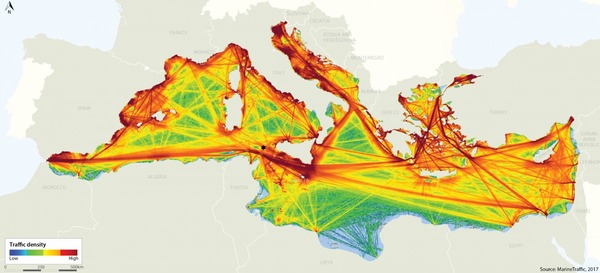
Figure 3 The density of maritime traffic in the Mediterranean Sea with the black star indicating the study area of the marine campaign held in summer 2021 in the Strait of Sicily within the Central Mediterranean Sea. Modified from MED QSR 2017.
But who can ensure that the conditions I encountered during the campaign are applicable to all ships that cross the central Mediterranean on a daily basis? More data and replicas would be needed to confirm the observations made during the campaign. The film below shows about 70 species of birds of all sizes that stop aboard large commercial ships and oil tankers, shows that our observations are generalizable to even the largest and fastest ships.
The rough estimates that I have drawn up certainly need to be refined between seasons and sectors of the Mediterranean; but there are certainly hundreds of thousands if not millions of birds that use the ships as stopover during the autumn migration (and most likely also during the spring one). This constitutes a large sample of individuals whose arrival and departure times are known with certainty and can also be experimentally manipulated. Research using standardized protocols for capturing and handling birds arriving on board could develop a number of interesting lines of investigation, starting with the reasons why migratory flights are interrupted, leading to their landing. Bio-logging birds on board would allow to collect data on their survival, speed, travel times, etc., while the sampling of biological tissues would provide genetic and physiological information (Owen & Moore 2006; Bauer & Watts 2021).
Targeted projects undertaken by ornithologists aboard ships crossing the trade routes of the Mediterranean Sea during periods of avian migration could transform studies on stopover ecology.
References
Bauer, C.M. & Watts, H.E. 2021. Corticosterone’s role in avian migration: assessment of three hypotheses. Hormones and Behavior 135: 105033. VIEW
Fuchs, T., Haney, A., Jechura, T.J. Moore, F.R. & Bingman, V.P. 2006. Daytime naps in night-migrating birds: behavioural adaptation to seasonal sleep deprivation in the Swainson’s Thrush Catharus ustulatus. Animal Behaviour 72: 951-958. VIEW
Fusani, L., Cardinale, M., Carere, C. & Goymann, W. 2009. Stopover decision during migration: physiological conditions predict nocturnal restlessness in wild passerines. Biology Letters 5: 302-305 VIEW
Mallon, J.M., Bildstein, K.L. & Fagan, W.F. 2021. Inclement weather forces stopovers and prevents migratory progress for obligate soaring migrants. Movement Ecology 9: 39 VIEW
Owen, J.C. & Moore, F.R. 2006. Seasonal differences in immunological condition of three species of thrushes. Condor 108: 390-399 VIEW
Roques, S., Lank, D.B., Cam, E. & Pradel, R. 2021. More than just refuelling: lengthy stopover and selection of departure weather by sandpipers prior to transoceanic and transcontinental flights. Ibis 163: 519-535 VIEW
Schmaljohann, H., Eikenaar, C. & Sapir, N. 2022. Understanding the ecological and evolutionary function of stopover in migrating birds. Biological Reviews 97: 1231-1252 VIEW
Smith, A.D. & McWilliams, S.R. 2014. What to do when stopping over: behavioral decisions of a migrating songbird during stopover are dictated by initial change in their body condition and mediated by key environmental conditions. Behavorial Ecology 25: 1423-1435 VIEW
Image credit
Top right: Northern Long-eared Owl (Asio otus) resting on a merchant ship.
If you want to write about your research in #theBOUblog, then please see here.


